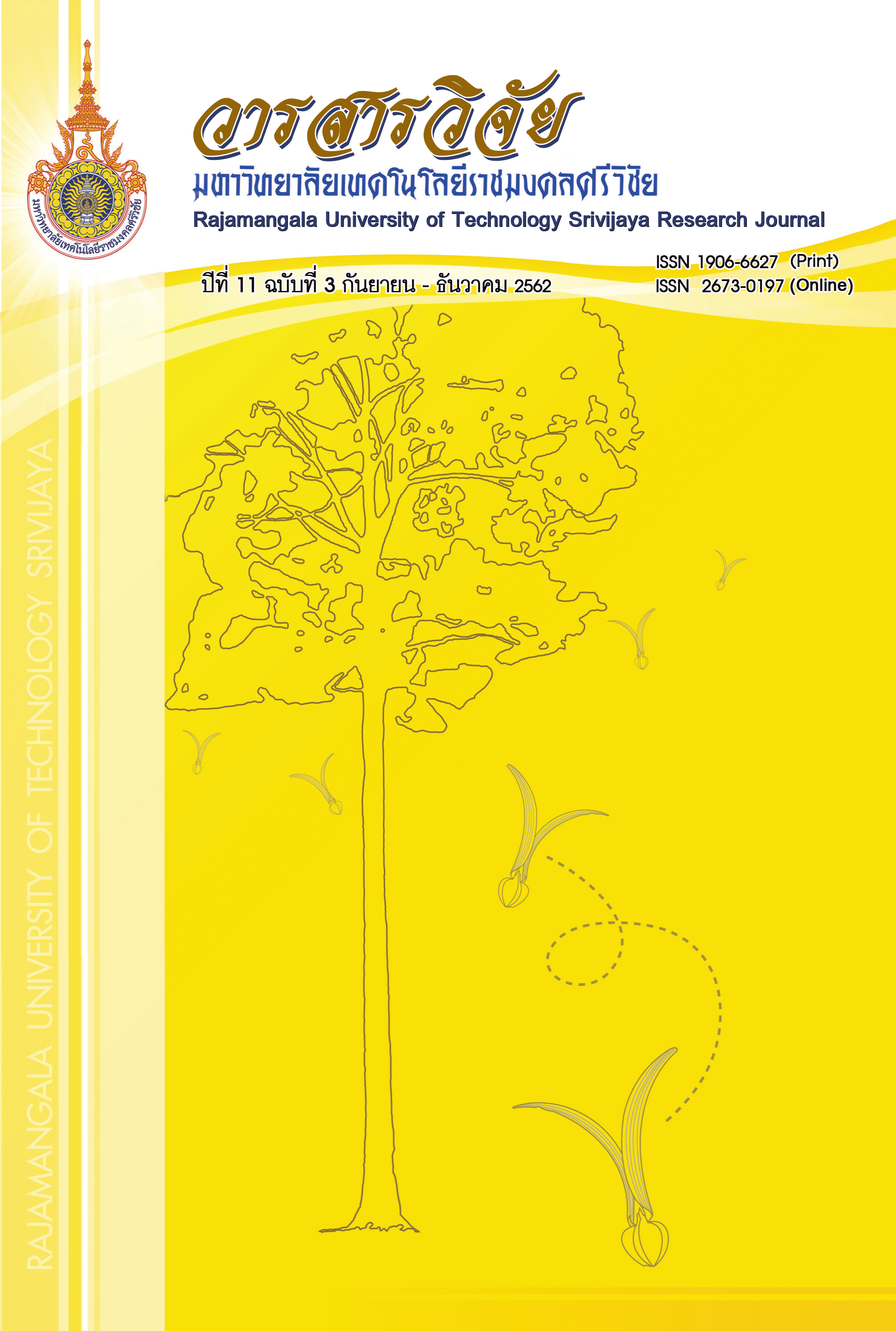Efficiency of Crude Extract from Lantana camara L. on Controlling Cowpea Aphid, Aphis craccivora Koch (Homoptera: Aphididae)
Main Article Content
Abstract
The repellent, insecticidal and anti-feedant activity of ethanol extracts from hedge flower extract, Lantana camara L. were tested on cowpea aphid, Aphis craccivora Koch. The various concentrations of crude extract from hedge flower of 0, 0.3125, 0.625, 0.125, 0.25 and 5% (w/v) were applied. The treatments were arranged in a completely randomized design (CRD) and replicated 5 times on 10 adults. The experiment was conducted at biology laboratory. The leaf dipping method was applied with different concentrations of hedge flower extract (0, 0.3125, 0.625, 0.125, 0.25 and 5% (w/v)). The results indicated that the repellent, insecticidal and anti-feedant activity of hedge flower extract on cowpea aphid were significantly effective (p<0.05) when compared with the control. At 5% of hedge flower extract, the percent of repellent and the percent of mortality were the highest at 100% and LC50 value was 1.25 at 24 hours when compared with the control. For the anti-feedant activity, the number of probing was higher when the concentration was higher. The number of probing was the highest (9.40 + 0.74) at 5% concentration when compared with the control (1.20 + 0.48). Time of penetration was lower when the concentration was higher. Time of penetration was the lowest (0.14 + 0.26 min) at 5% concentration when compared with the control (8.64 + 1.03 min).
Article Details
The content and information in the article published in Journal of Rajamangala University of Technology Srivijaya It is the opinion and responsibility of the author of the article. The editorial journals do not need to agree. Or share any responsibility.
References
Aktar, M.D., Sengupta, D. and Chowdhury, A. 2009. Impact of pesticides use in agriculture: their benefits and hazards. Interdisciplinary Toxicology 2(1): 1-12.
Azad, M.A.K. 2012. Effect of botanical extract on pest control in Brinjal field. Journalof environmentalscience and natural resources 5(2): 173-176.
Blackman, R.L. and Eastop, V.F. 2000. Aphids on the world’s crops: an identification and information guide 2nd ed. John Wiley and Sons, Chichester.
Booij, M.W., Kloth, K.J., Jongsma, M.A., Dicke, M. and Hemerik, L. 2013. Analysing aphid behaviour with time-to-event techniques to discriminate between susceptible and resistant plants. Proceedings of the Netherlands Entomological Society Meeting 24: 9-16.
Emden H.F.V. and Harrington, R. 2007. Aphids as Crop Pests. Wallingford Oxfordshire Press, United Kingdom. Finney, D.J. 1971. Probit Analysis 3rd ed. Cambridge University Press, London.
Halbert, S.E., Corsini, D., Wiebe, M. and Vaughn, S.F. 2009. Plant-derived compounds and extracts with potential as aphid repellents. Annals of Applied Biology 154: 303-307.
Huron, E.N., Abbas, A.A., El-Hamid, N.A.A., Nada, M.S. and Amin, T.R. 2016. Toxicity and acute macromolecular abnormalities induced by some plant extracts against the Cowpea aphid; Aphis carricivora Koch. Journal of Plant Protection and Pathology Mansoura University 7(7): 445-449.
Murugesan, S., Rajeshkannan, C., Babu, D.S., Sumathi, R. and Manivachakam, P. 2012. Identification of insecticidal properties in common weed - Lantana camara Linn by Gas Chromatography and Mass Spectrum (GC-MS-MS). Advances in Applied Science Research 3(5): 2754-2759.
Pérez, C.J., Alvarado, P., Narváez, C., Miranda, F., Hernández, L., Vanegas, H., Hruska, A. and Shelton, A.M. 2000. Assessment of insecticide resistance in five insect pests attacking field and vegetable crops in Nicaragua. Journal of Economic Entomology 93(6): 1779-1787.
Poole, R.W. and Gentili. P. 1996. Cowpea aphid, Aphis craccivora Koch 1854. Availble source: https://www.insectimages.org/browse/subthumb.cfm?sub=8116. March 1, 2017.
Priyanka, N and Joshi, P.K. 2013. A review of Lantana camara studies in India. International Journal of Scientific and Research Publications 3(10): 1-11.
Relyea, R.A. 2005. The impact of insecticides and herbicides on the biodiversity and productivity of aquatic communities. Ecological Applications 15(2): 618-627.
Sadek, R.Z., Elbanna, S.M. and Semida, F.M. 2013. Aphid-host plant interaction. Open Journal of Animal Sciences 3(2A): 16-27.
Sarwar, M. 2015. The dangers of pesticides associated with public health and preventing of the risks. International Journal of Bioinformatics and Biomedical Engineering 1(2): 130-136.
Sarwar, M and Salman, M. 2015. Insecticides resistance in insect pests or vectors and development of novel strategies to combat its evolution. International Journal of Bioinformatics and Biomedical Engineering 1(3): 344-351.
Sharma, N and Singhvi, R. 2017. Effects of chemical fertilizers and pesticides on human health and environment: A review. International Journal of Agriculture, Environment and Biotechnology 10(6): 675-679.
Sharma, G.P., Raghubanshi, A.S. and Singh, J.S. 2005. Lantana invasion: An overview. Weed Biology and Management 5: 157-165.
Tiwari, R. and Rana, C.S. 2015. Plant secondary metabolites: a review. International Journal of Engineering Research and General Science 3(5): 660-670.
Zandi-Sohani, N., Hojjati, M. and Carbonell-Barrachina, A.A. 2012. Bioactivity of Lantana camara L. essential oil against Callosobruchus maculatus (Fabricius). Chilean journal of agricultural research 72(4): 502-506.
Zhou, B.G., Wang, S., Dou, T.T., Liu, S., Li, M.Y., Hua, R.M., Li, S.G. and Lin, H.F. 2016. Aphicidal activity of Illicium verum fruit extracts and their effects on the acetylcholinesterase and glutathione s-transferases activities in Myzus persicae (Hemiptera: Aphididae). Journal of Insect Science 16(1): 1-7.

